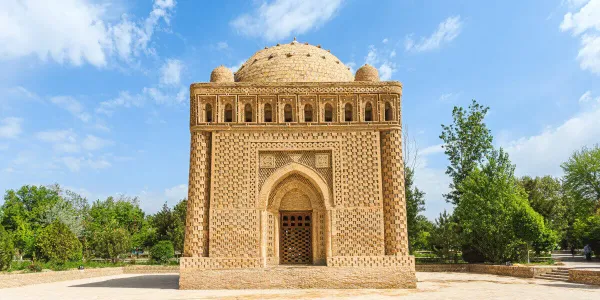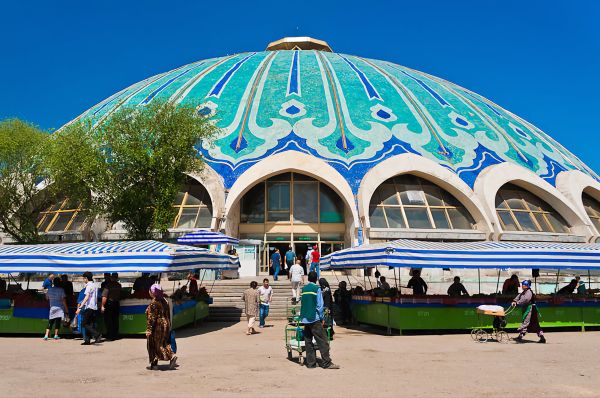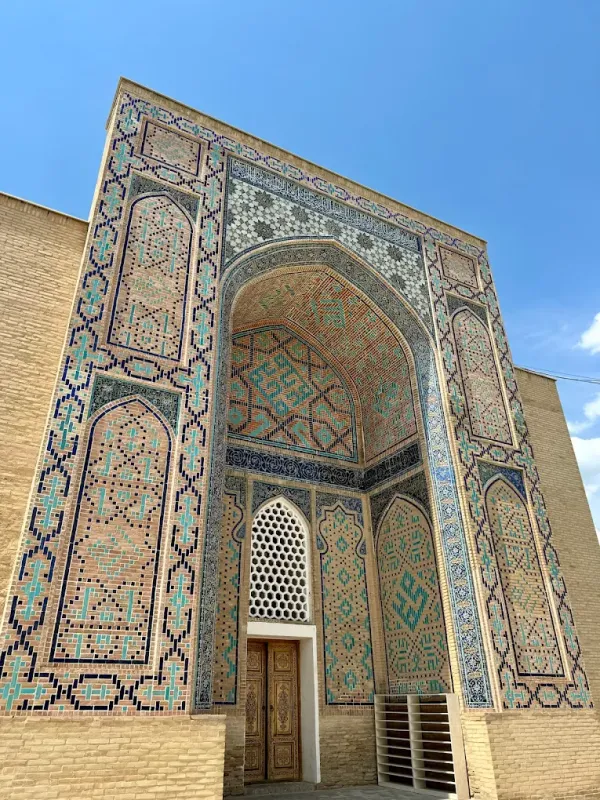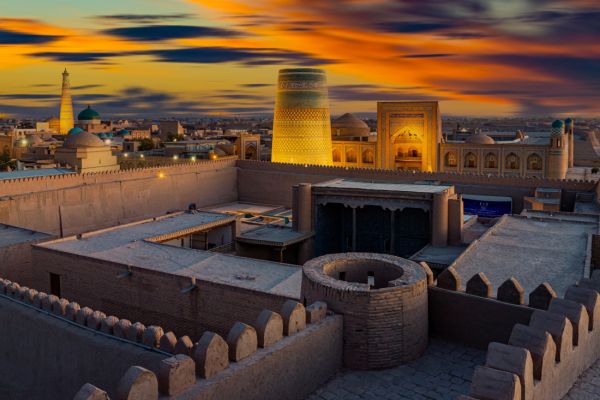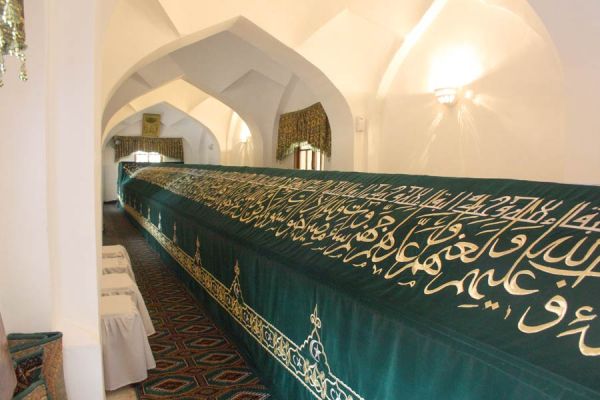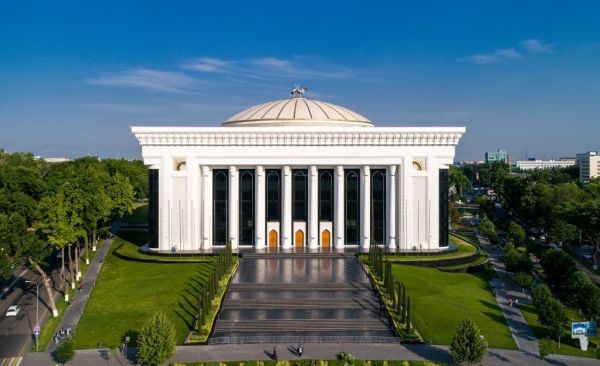Poi Kalyan Mosque
This main ensemble in the center of Bukhara is located at the intersection of the trade routes of the "four bazaars", and Poi-Kalyan means "the foot of the Great" (or otherwise "the foot of the Kalyan minaret"). The ensemble includes 4 elements: the Kalyan Mosque and the Miri Arab Madrasah facing each other, between them the Kalyan minaret, and the Amir Alimkhana Madrasah, which stands south of Miri Arab.
The Kalyan Minaret is a majestic column that towers over the entire city. To call for prayer, the muezzin climbed to the top of the minaret and proclaimed it to the whole neighborhood, as was customary in the first centuries of Islam. The word minaret comes from "minor" - that is, a place where a fire is lit pointing the way, similar to a lighthouse, such as the 143-meter-high Lighthouse of Alexandria, which was built in 283 BC. This minaret plays a special role in the architecture of Bukhara.
At the beginning of the 12th century, Arslan Khan ordered the renovation of the minaret of the old cathedral mosque. But when the work was finished, the minaret collapsed, losing 2/3 of its height. Arslan Khan ordered the restoration of the minaret, which is known from the inscription on the turquoise majolica adorning the cornice of the Kalyan minaret. The date of completion of the construction was also determined by this inscription – it is 1127. The diameter of the minaret at the base is 9 meters, and narrows to 6 meters at the top, and the total height is 45.6 meters. There is a spiral staircase inside.
The Kalyan Madrasah is recognized as a masterpiece of Bukhara architecture, a monument of the 5th century, restored from ruins during the Soviet era. At the beginning of the 16th century, it was already reconstructed. Arches of amazing shape and the decor of the portal became a feature of the Bukhara style in the XVI-XVII centuries. The inscription above the arch of the portal refers to the period of restoration, and on it you can see the dates 1514-1515. And in 1541, a marble slab appeared at the entrance, installed by Khan Abdulaziz I, which states that Bukhara residents are exempt from paying certain taxes.
The Poi-Kalyan ensemble is the most important attraction of Bukhara, and not to see it means not to see Bukhara. Although it is quite difficult not to notice the top of the Kalyan minaret, towering over the whole city.

